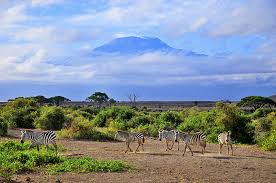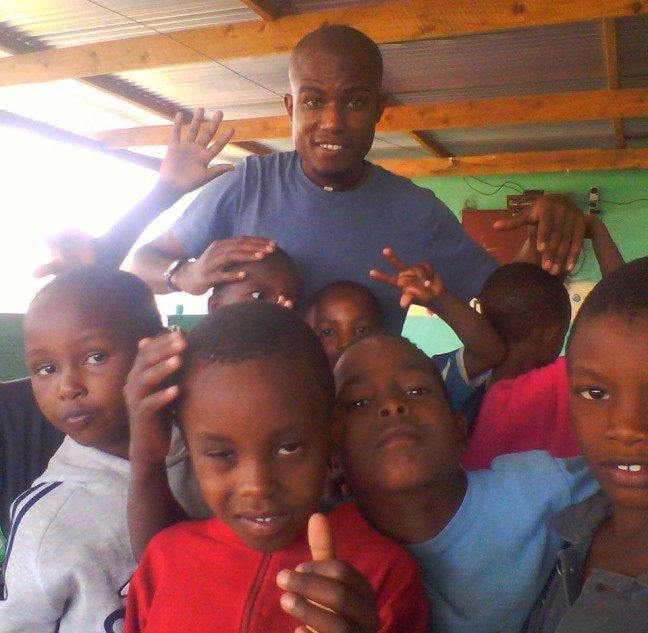Serengeti National Park is undoubtedly the best-known wildlife sanctuary in the world, unequalled for its natural beauty and scientific value. With more than two million wildebeest, half a million Thomson’s gazelle, and a quarter of a million zebra, it has the greatest concentration of plains game in Africa. The wildebeest and zebra moreover form the star cast of a unique spectacular – the annual Serengeti migration.The name ‘Serengeti’ comes from the Maasai language and appropriately means an ‘extended place’. The National Park, with an area of 12,950 square kilometres, is as big as Northern Ireland, but its ecosystem, which includes the Ngorongoro Conservation Area, the Maswa Game Reserve and the Maasai Mara Game reserve (in Kenya), is roughly the size of Kuwait. It lies between the shores of Lake Victoria in the west, Lake Eyasi in the south, and the Great Rift Valley to the east. As such, it offers the most complex and least disturbed ecosystem on earth.
A unique combination of diverse habitats enables it to support more than 30 species of large harbivores and nearly 500 species of birds. Its landscape, originally formed by volcanic activity, has been sculptured by the concerted action of wind, rain and sun. It now varies from open grass plains in the south, savannah with scattered acacia trees in the centre, hilly, wooded grassland in the north, to extensive woodland and black clay plains to the west. Small rivers, lakes and swamps are scattered throughout. In the south-east rise the great volcanic massifs and craters of the Ngorongoro Highlands. Each area has its own particular atmosphere and wildlife.
The Serengeti’s climate is usually warm and dry. The main rainy season is from March to May, with short rains falling from October to November. The amount of rainfall increases from about 508mm on the plains in the lee of the Ngorongoro Highlands to about 1,200mm on the shores of Lake Victoria. All is lush and green after the rains, but a gradual drying up follows which restricts plant growth and encourages the animals to migrate in search of permanent waters. With altitudes ranging from 920 to 1,850 metres – higher than most of Europe – mean temperatures vary from 15 degrees to 25 degrees Celsius. It is coldest from June to October, particularly in the evenings.
In the open grass plains during the rainy months from November to May hundreds of thousands of wildebeest and Burchell’s zebra congregate. The area is the starting point for one of the great wonders of the world: the Serengeti annual migration. Towards the end of May when the grass becomes dry and exhausted, the wildebeest start to mass in huge armies. All is far from peaceful, for it is the rutting season and each male tries to establish a stamping ground. Eventually, after several dummy runs, the animals begin their trek in a column several miles long to the permanent waters in the north of the Park. After moving westwards, the migration divides by some uncanny instinct, one group turning north-east and the other due north. Once started, little stops the stampede: hundreds often drown at a time in the broad Mara river in the north.
Although outnumbered eight to one, the zebra join in the migration, maintaining their family units of about a dozen members, each with a dominant stallion. Their yelping bark combines with the bleating of the wildebeest to give the typical sound of the migration. Lion, cheetah, hyena and hunting dog follow the wildebeest and zebra, making sure that only the fittest survive. In November, when the grazing is finished in the North, this army of animals surges back to the now green pastures of the south, where they calve and mate before starting the entire cycle again. Normally, the best time to see the animals here is during January and February.
Heading north into the Park, the grass becomes noticeably longer, and it is usual to see Grant’s and Thomson’s gazelles, as well as the occassional small groups of topi and kongoni. Ostriches and secretary birds stalk the grass, while a family of warthog often scurry away. Out of the vast sea of grass also rise great granite outcrops, known as ‘kopjes’, which have their own range of vegetation and wildlife.
Towards Seronera, the Park headquarters, the landscape becomes more varied. Hills rise out of plains criss-crossed by small rivers. Umbrella acacia trees appear, elegant and serene, contrasting with the twisted commiphora trees. Then at Seronera a beautiful lodge is built on a kopje, a sculpture of wood and stone set in a tranquil garden. Nearby camping sites offer an opportunity to share the experience of the early explorers.
Cheeky hyraxes and lizards play on the rocks and a profusion of birds – superb starlings, lilac-breasted rollers, barbets and ring-necked doves to name but a few – fill the air with their songs. But all around is some of the wildest bush in Africa. Giraffes nibble the tender leaves of the thorny acacias, buffalo lumber along, and all manner of game – Thomson’s and Grant’s gazelles, impala, topi and kongoni – graze nervously. At night the soaring cough of the leopard and the whooping laugh of the hyena interrupt the incessant ticking of the cicadas. And then there are famous black-maned lions of Seronera. No longer hunted like vermin, a pride of up to twenty can often be seen in a tawny heap.
From Seronera, the road to the west runs parallel to the Grumeti river, crossing extensive cotton soil plains. The riverine wood along its banks supports many black and white colobus monkeys while exceptionally large crocodiles take to its waters. In open clearings and on hills, a herd of roan antelope or Patterson’s eland sometimes appear.








